This funny-sounding nutrient is found in tons of foods and can help your system fend off sickness.

With warm mugs of hot cocoa, fuzzy socks, and cozy fires of winter can also come stuffy noses, colds, and the flu. Thankfully, there are so many ways we can boost our immune systems, through everyday habits and choices—regular exercise, adequate sleep, and the healing power of food and nutrition. Enter: quercetin, a plant compound found in a variety of familiar foods that will help your immune system thrive, ward off cold and flu, and also improve your overall health.
When it comes to determining what makes a food healthy, many turn to the macronutrient (carbs, fat, and protein) and micronutrient (vitamins and minerals) content. But when it comes to plants, their nutritive power goes far deeper, thanks to plant compounds—also called phytochemicals, phenolic compounds, polyphenols, or phytonutrients. There are over 8,000 plant compounds currently known to scientists, each with its own unique benefits to our health. Because of the sheer number of these powerful nutrients, they’re classified into multiple groups and subclasses. Quercetin fits in under the flavonol subclass of the flavonoid group and is one of the most widely studied. Let’s find out why.
:The Top 7 Antioxidant-Rich Foods You Should Stock Up On
Health Benefits of Quercetin
All phytonutrients, including quercetin, are considered to be potent antioxidants, meaning they help reduce inflammation in the body and fend off harmful free radicals. Free radicals are unstable atoms that can cause significant damage to healthy cells, potentially leading to cellular death or illness. They’re the culprits behind a gambit of health concerns, from pesky crows feet all the way to heart disease and cancer.
But talking about quercetin’s antioxidant properties only skims the surface of what this nutrient has to offer. Research has shown that quercetin has impressive antibacterial, antiviral, antimicrobial, and wound-healing benefits, aiding in significantly boosting our immune systems. It’s also been found to be protective against type 2 diabetes, arthritis, and cardiovascular disease. Even further evidence shows that it holds neuroprotective properties across our lifespan—from protection against neurological disorders in children to Alzheimer’s in adults.
:6 Nutrient-Packed Foods to Eat for Better Brain Health
One of the most impressive therapeutic benefits of quercetin is its ability to help fight off cancer. Research has found that quercetin impacts cancer through multiple pathways including reducing cell vitality, preventing cell multiplication, aiding in cancer cell death, and then disposing of those dead cancer cells properly. It also interferes with the metabolic processes that feed cancer cells and the cancer cell components that are charged with energy production (the mitochondria for all you biology buffs), actively destroying the cells.
So with all of these incredible benefits, how can we get more quercetin into our diets? Luckily, it’s present in tons of fruits and veggies you know and love, and it’s one of the most common flavonols found in the western diet.
The amount of quercetin we need each day depends on a variety of factors, but typically somewhere between 250 and 1,000 milligrams (mg) per day will help you reap all the health rewards it has to offer. Here are some particularly high sources of quercetin to get you started and help you eat your way toward a stronger immune system.
:3 Foods That Undermine Your Immune System
Healthy Food Sources of Quercetin
Red Onions
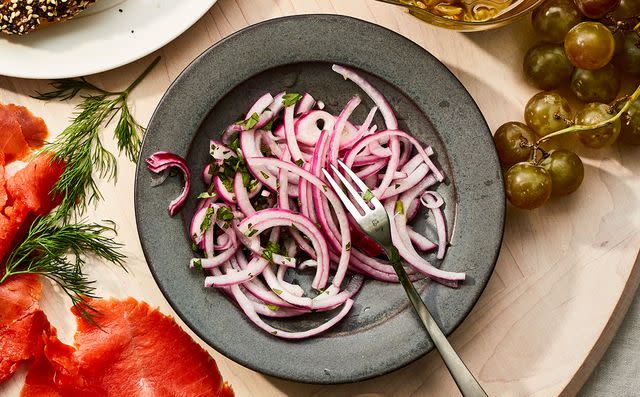
All onions will provide some quercetin, but red onions are particularly high in this phytonutrient with about 45 mg of quercetin in one small onion. Onions are also full of other buzzworthy plant compounds like kaempferol, known to be super-effective in reducing inflammation. Plus, they’re the perfect culinary addition to eggs, soups, stir fry, nachos, sandwiches—the list is endless.
Apples

:Slow Cooker Apple-and-Pear Sauce
Apples are not only full of fiber and immune-boosting vitamin C, but they’re also loaded with quercetin. One average-sized apple will get you 10 mg closer to your daily quercetin goal. Many of these nutrients are found in the skin, so try to avoid peeling your apples to get the most out of them.
Buckwheat
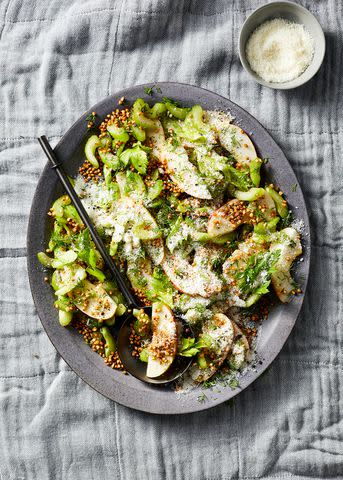
:Celery-and-Apple Salad With Crispy Buckwheat
Don’t let the “wheat” in its name fool you: This tasty whole grain is naturally gluten-free and chock full of nutrition. Rich in B vitamins thiamin, niacin, folate, riboflavin, and B6, buckwheat will help you maintain healthy energy levels throughout the day. And, of course, it’s a great source of quercetin with one cup offering 36 mg of quercetin.
Capers
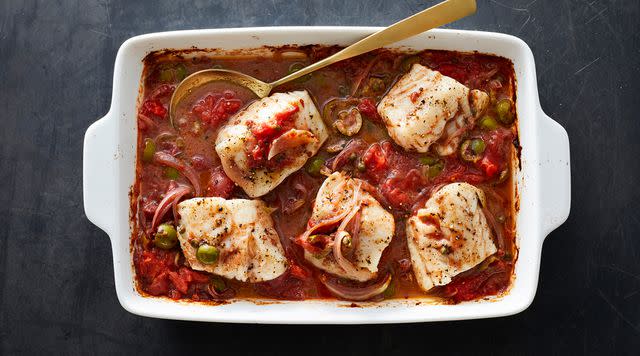
:Baked Cod With Capers, Tomatoes, and Olives
We all know and love capers as a briny addition to a number of Italian dishes, but what are they? The unripe green flower buds of the caper bush, these salty pops of flavor are often overlooked as a source of nutrition. Capers are full of minerals, calcium and iron, as well as many plant compounds, including quercetin. A quarter-cup of capers provides an impressive 122 mg of quercetin.
Green Tea
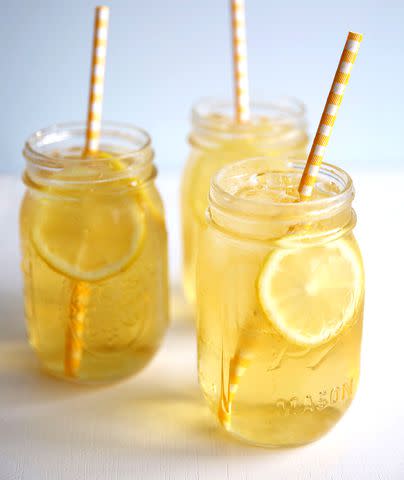
When it comes to getting in your daily dose of plant compounds, look no further than your tea drawer. In addition to quercetin, green tea is notably high in phytonutrient epigallocatechin-3-gallate (EGCG), which is said to be one of the main nutrients responsible for green tea’s historical medicinal use, helping to keep cholesterol and blood sugars in check. Plus, you’ll get 15 mg of quercetin per 12 ounces of green tea.
Kale
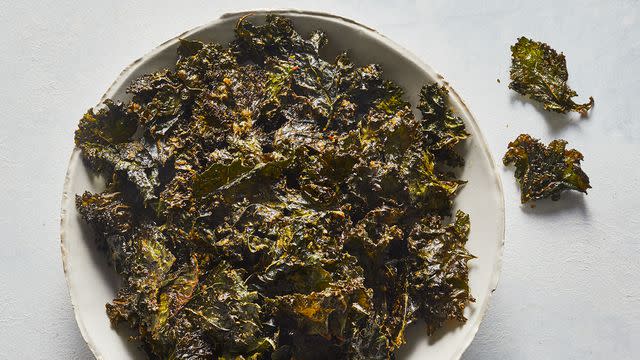
As if we needed another reason to eat kale, this famed superfood is also full of quercetin, with 23 mg per one cup uncooked. Kale is also an incredible source of vitamin K for blood clotting, vitamin C for immune health, and vitamin A for eye health.
:The 10 Tastiest Ways to Eat More Kale—Even if You're Over Kale Salad
Blueberries
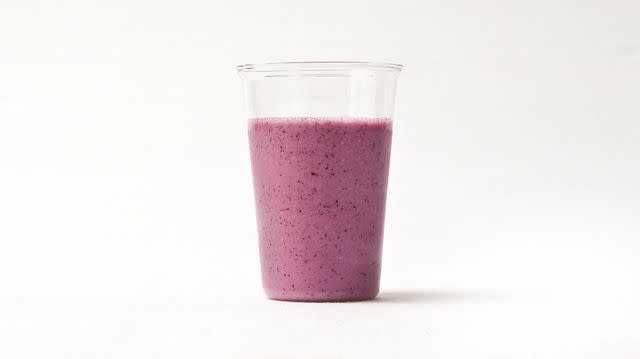
:Ginger, Blueberry, Oat Smoothie
They’re the perfect smoothie ingredient and pancake topping, and the brilliant color of blueberries gives us a surface-level glimpse into just how nourishing they are. Blueberries are packed with anti-inflammatory plant compounds quercetin and anthocyanins, containing up to 14 mg of quercetin per one cup. These sweet berries are also packed with fiber, potassium, and manganese, helping to maintain healthy bones and blood pressure.
Broccoli
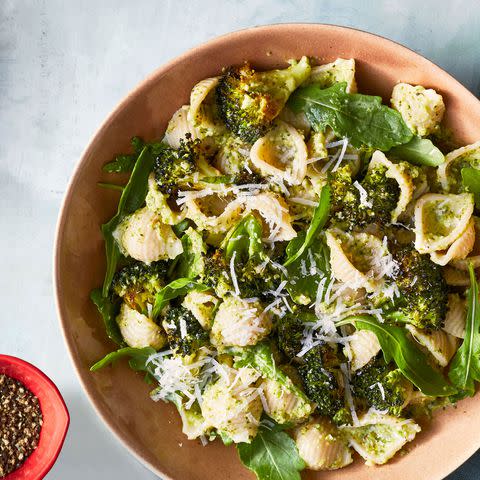
Part of the cruciferous vegetable family, broccoli provides more protein than most other vegetables, making them a perfect, green addition to a plant-based meal. Broccoli is also full of quercetin with a small bowl of raw broccoli offering 14 mg.
Pistachios

:Green Risotto With Pistachio Pesto
An often overlooked nut, pistachios are not only delicious, but rich in nutrients to help us feel our best. Pistachios are particularly high in a variety of phytochemicals including beta carotene, lutein, zeaxanthin, anthocyanins, and of course, quercetin. One cup of these tasty green morsels can contain up to 5 mg of quercetin—so add them to your grocery cart next time you’re in the nut aisle.
:3 Immunity-Boosting Ingredients RDs Want You to Add to Your Diet
For more Real Simple news, make sure to sign up for our newsletter!
Read the original article on Real Simple.

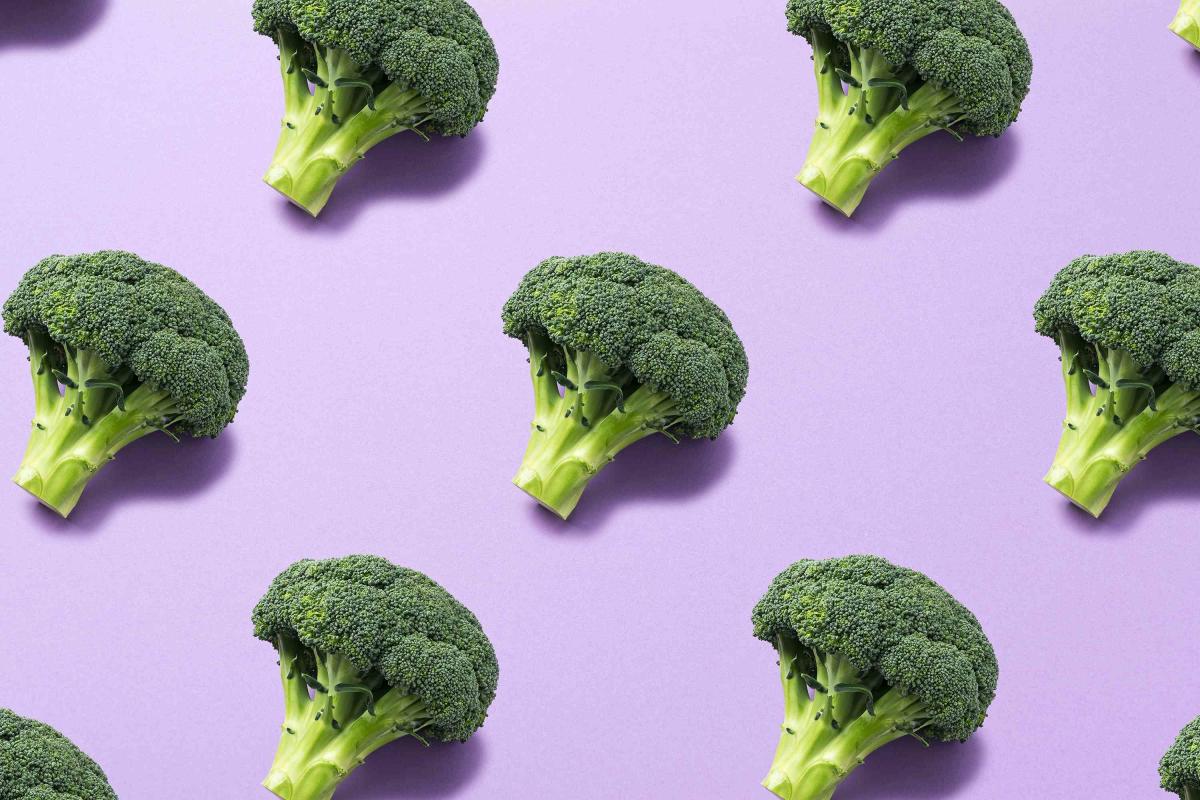




More Stories
Why Bamboo Cutting Boards Are More Eco-Friendly Than Other Materials
Nutritionist Reveals 10 Easy Ways To Curb Sugar Cravings – Find Out What They Are
How can we make our brains prefer healthy food? – study